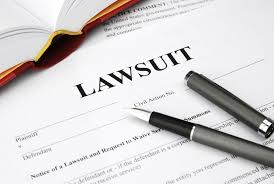Three Keys to Minimizing Employment Litigation Risks
 In this era of shooting-from-the-hip or bombastic Donald Trump comments, companies have to attend to reducing employment litigation risks. In this era of nuisance litigation and employment-focused litigation, companies need to take affirmative steps to reduce employment claims and related litigation.
In this era of shooting-from-the-hip or bombastic Donald Trump comments, companies have to attend to reducing employment litigation risks. In this era of nuisance litigation and employment-focused litigation, companies need to take affirmative steps to reduce employment claims and related litigation.
There are three key steps that every company should take in order to reduce employment litigation exposure. Companies have to recognize potential employee concerns early and take steps to act according to policies and practices designed to minimize employment litigation claims.
Management Training: Managers have to attend regular training on how to handle employee complaints and to avoid potential employee claims. Human resource training is imperative and has to be regularly updated as new managers are appointed and trends in the law develop.
In many cases, a company has lost an employment case before it even gets started once the middle manager engages in appropriate conduct or mishandles a situation with comments or an email that can undermine any defense the company may have.
A proactive approach to training is to outline key considerations but develop multiple scenarios and hypotheticals that often arise in the workplace. Building in an interactive or hypothetical situation fosters discussion around important issues and helps to embed a principled approach to handling employment issues.
Managers also need to engage in proactive positive workplace environment communications. A staff meeting is an important opportunity to reinforce a message, attach management credibility to a workplace issue, and instill trust in the management of employment issues.
Managers should remind employees that discrimination, sexual harassment, and disrespect in the treatment of others will not be tolerated and management will address any of these incidents that occur.
Management and Culture: Managers are critical communicators and actors in demonstrating the company’s culture. If managers engage in misbehavior and there are no consequences for such behavior, employee moral and conduct will inevitably deteriorate.
Managers have to be anointed as cultural ambassadors who represent the company. This is an important message and attitude that has to be instilled and reinforced continuously by senior management and Human Resources. Compliance plays an important role in coordinating this effort, and is another area where compliance and HR can coordinate and leverage their respective responsibilities.
 Documentation: Similar to compliance actions, employment decisions and directions have to be documented. In the employment context, documentation of employee concerns, responses to such concerns, and the impact of remediation is critical. Of course, any disciplinary action or counseling that occurs has to be documented fully and maintained in a record. A company’s ability to take or defend an employment action depends on its documentation of progressive response to an employee who engages in misconduct.
Documentation: Similar to compliance actions, employment decisions and directions have to be documented. In the employment context, documentation of employee concerns, responses to such concerns, and the impact of remediation is critical. Of course, any disciplinary action or counseling that occurs has to be documented fully and maintained in a record. A company’s ability to take or defend an employment action depends on its documentation of progressive response to an employee who engages in misconduct.
When a company has to rely on oral statements that are not recorded or recollections of incidents that are not reduced to writing, the company is asking for trouble. Companies want to avoid situations where an employment case boils down to competing recollections and inferences from follow up actions, all of which has not been documented or recorded.















